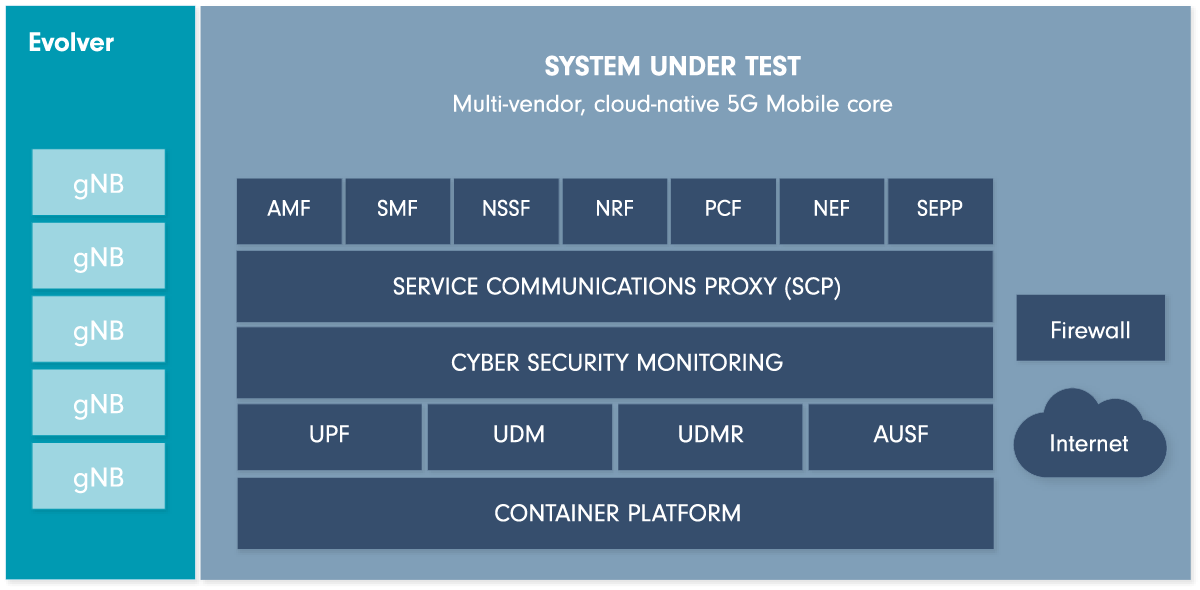End-to-end testing for 5G networks
Complete end-to-end test capabilities for 5G networks, covering all core nodes and interfaces. Enable the validation, assurance and emulation of key functions
Test and verification for 5G networks
5G networks bring complexity, which means that end-to-end testing is essential to ensure that services perform as expected and with the requisite scale and performance
Comprehensive end-to-end testing is essential in a multi-vendor 5G environment to ensure network components scale with user adoption and traffic and maintain optimal performance. Evolver is an automated, end-to-end platform that can model different traffic patterns and flows and create unique user content packages that reflect 5G services, service chains and applications.
5G End-to-end Testing

End-to-end testing for 5G networks
Validation, emulation and assurance of key functions
Evolver provides complete end-to-end test capabilities for 5G networks, covering all core nodes and interfaces. It enables the validation, emulation, and assurance of key functions, with simulation of User Equipment (UE) from the gNodeB. Evolver provides a single platform that enables automated test programmes aligned with DevOps CI / CD schedules.
Since network coverage is not uniform, Evolver also includes handover simulation options. This creates a more accurate picture of UE behaviour by modelling interworking with 4G, 3G and other networks when 5G coverage is unavailable. Evolver can also extend to dedicated network slices and low-latency scenarios.
Fully automated and integrated
Test nodes in isolation, perform ‘wraparound’ testing, emulate 5G to 4G service interworking, in live networks and slices
Multiple or individual node testing
Supports N1 / N2 / N3 / N4 / N6 / N 11 interfaces. A single solution for testing multiple use cases and test scenarios
Test UE behaviour for internetworking
Provides handover simulation to reproduce UE behaviour on other networks when 5G coverage is unavailable
Scalable, end-to-end 5G testing
Fully cloud native. Configure traffic and QoS parameters for different services, simulating from 1 to millions of users




